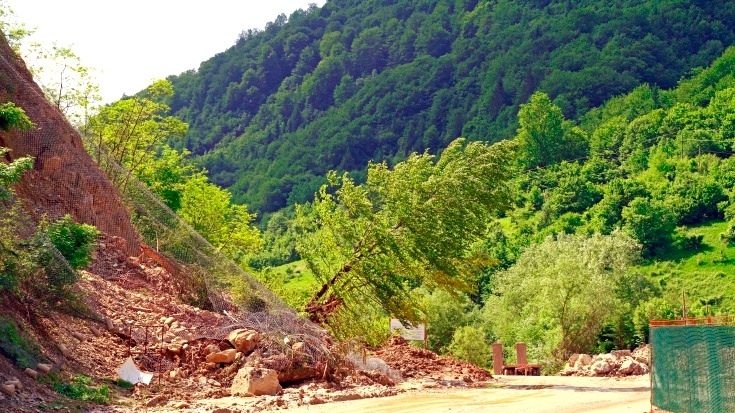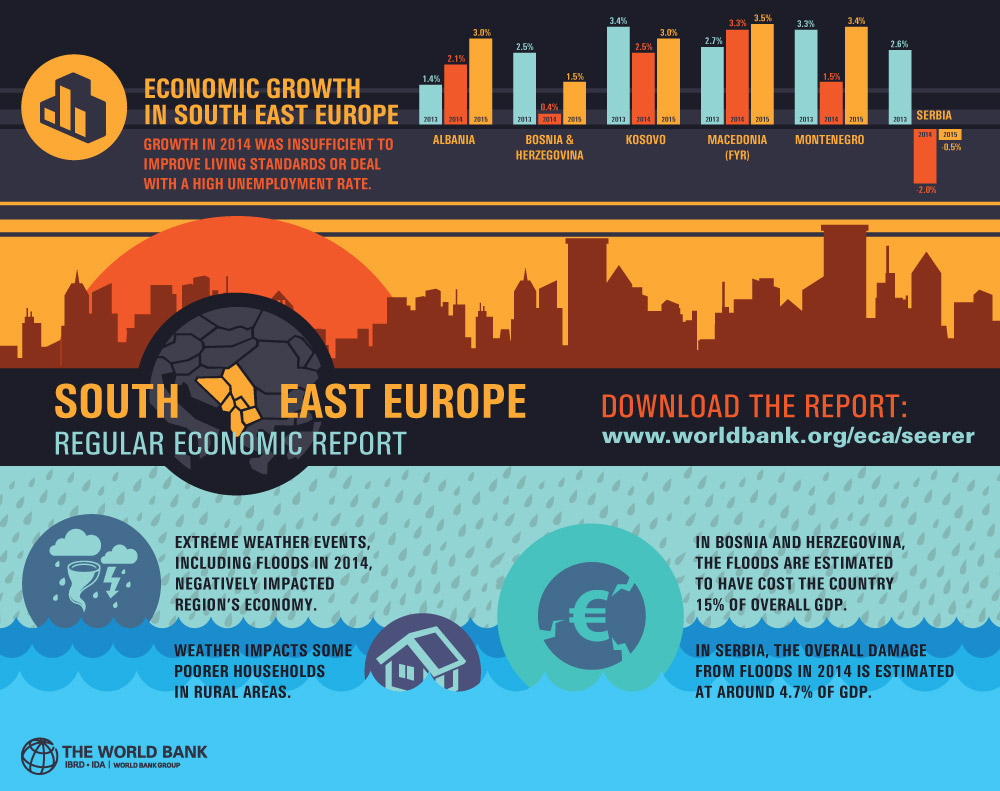While many structural challenges like these continue to represent hurdles to sustained growth in the region, another, less predictable challenge also emerged during 2014 - significantly hampering growth in these countries and across the region as a whole: weather.
Extreme weather events, including devastating floods in May, plagued much of the region throughout 2014 and negatively impacted nearly every economic sector in the region - from agriculture, to energy, to tourism.
Unprecedented rainfall in May resulted in the worst floods the region has seen in more than 100 years. In Bosnia and Herzegovina, these floods killed more than 20 people and displaced a further 90,000 and resulted in billions of dollars in damages across the region. The floods are estimated to have cost the country some 15% of overall GDP in lost output and damages. In Serbia, the overall damage from these floods is estimated at around 4.7%. Nearly every segment of the economy was negatively impacted by these floods.
The impacts of this flood were amplified by earlier weather events in the region, further exacerbating the negative effect they had on growth in 2014. A drought in the summer of 2012 and a severe winter that same year stymied the agriculture sector, reduced energy generation, hindered tourism, and slowed construction more than usual around the region.
The severe impact these extreme events are having on economies in the region highlights the overall economic vulnerability of these countries. With climate, policymakers in these countries continue to explore options to help avoid or, at the very least, how to mitigate well these shocks.
In addition to adaptation and mitigation efforts - such as flood defenses and weather-resistant infrastructure - the latest SEE RER also highlights the importance of expanding insurance markets in countries throughout the region to better protect homeowners and businesses against natural disasters - especially in the agriculture sector. As poorer households are more likely to work in agriculture and live in rural areas, the need for mechanisms to buffet them against the shocks brought on by floods, droughts, and heat waves is even more pressing.
Although as many as 40% of people in Albania and 20% in both Bosnia and Herzegovina and Serbia work in agriculture, insurance rates for plan that protect against weather and other natural disasters among these people is drastically low. In FYR Macedonia, just 4% of registered farmers insure their crops against weather related perils. In Kosovo, insurance companies represent just 3% of the total assets of the financial system, while in Bosnia and Herzegovina they represent just 5% of the total.
With economic growth forecasted at or above 3% in Albania, Kosovo, FYR Macedonia, and Montenegro, in 2015, this new year could see the South East region slowly emerge from stagnation. In addition to addressing the ongoing problems of high unemployment, stunted job creation, and boosting productivity of domestic firms, however, policymakers must also turn their attention to unexpected threats - such as floods, droughts and other natural disasters. Supplementing mitigation and adaptation initiative in these six countries with mechanisms such as insurance coverage - especially among the more vulnerable in the region - can go a long way in preventing the next disaster. These mechanisms can also drastically help recovery efforts on the ground if and when the next weather shock occurs.


